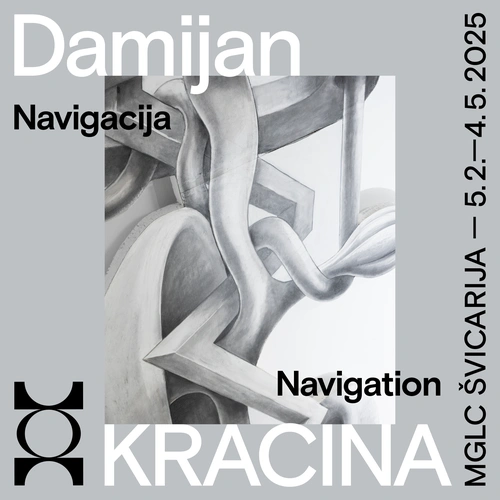Welcome to the MGLC Media Centre. Here you can find press releases and images from our exhibitions, events and publications, as well as a concise presentation of the International Centre of Graphic Arts (MGLC). If you need further information or assistance, please contact us.
Public relations
Sanja Kejžar Kladnik
+386 (0)1 241 38 19
sanja.kejzar@mglc-lj.si
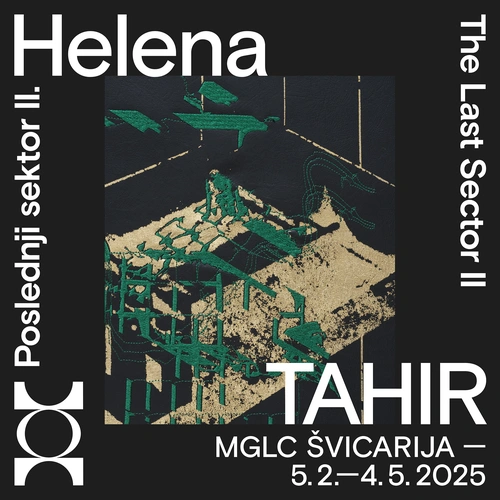
Helena Tahir works in the field of printmaking, painting and drawing. This year she is completing a two-year Young Artists Residency at MGLC Švicarija. The Last Sector is a series developed by the artist over the long term as an intimate return to the silenced past of her father and his homeland, the country of Iraq. It comprises photographs, prints with embroidery, an artist’s book, video, archival material and drawings made with indigo paper. The works are symbols of memories, now revealed and transformed into a coherent nevertheless still fragmented narrative of a family.
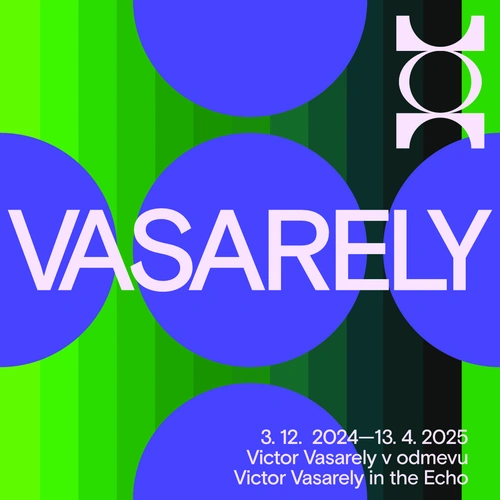
With a selection of Vasarely‘s prints, paintings and objects from various periods of his career, the exhibition Victor Vasarely in the Echo offers the Slovenian public a broader insight into the work of this outstanding Hungarian-French artist for the f irst time after many years. Vasarely established himself in the history of Western art after the Second World War with the distinct visual impression conveyed by the works of his most recognisable Op Art visual language. Equally important are his reflections and his decisive, sometimes utopian, standpoints on art, the status of the artwork and the role of the artist. The exhibition not only offers insight into Vasarely‘s art practice, but also sheds light on the local and regional arena, showing the reception of ideas that Vasarely helped to shape and advocate. The exhibition presents a diverse selection of works by Slovenian and Croatian fine artists and (graphic) designers, who were connected to him in various ways, even knew him personally, or shared a common interest in similar artistic topics.
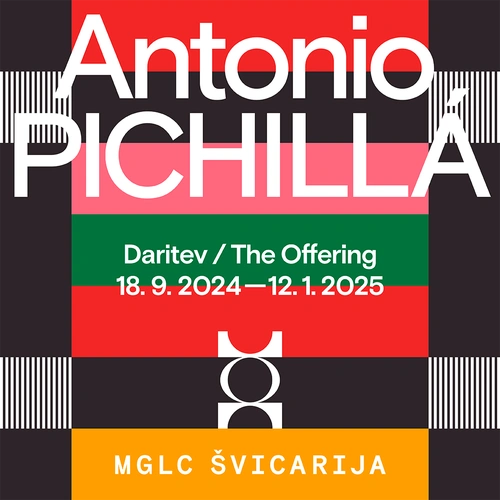
Antonio Pichillá Quiacaín (1982, San Pedro La Laguna, Sololá) belongs to the Maya Tz'utujil ethnic group. He uses his formal art training as a strategy to change the Eurocentric understanding of Maya art. The artist draws on the cultural heritage of his ancestors and uses it as a medium. He connects rituals and customs that honour the cosmogony of the Maya, demonstrating the contemporary relevance of their ancestral wisdom. In his art practice, he employs natural materials and combines them with fabric as the guiding thread of a discourse of resistance.
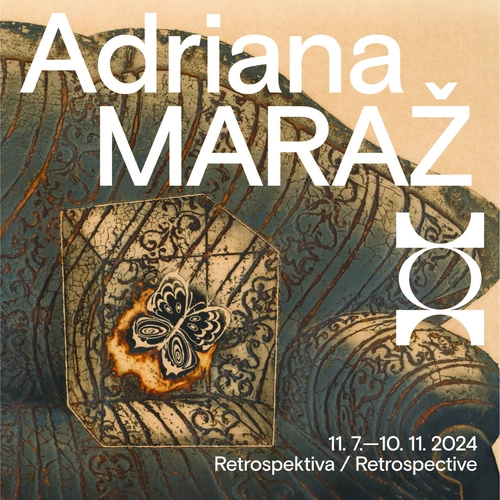
Adriana Maraž (1931–2015) is the most prominent Slovenian woman artist in the field of fine art printmaking, who also gained international recognition. She studied Painting at the Academy of Visual Arts in Ljubljana (now the Academy of Fine Arts and Design), but after 1965 printmaking became her main concern. This retrospective shows that her approach to intaglio printmaking was a masterclass in meticulous craftsmanship and creative innovation. Her prints in combined intaglio techniques evolved into a sophisticated play of form, texture and narrative depth. She did not only conquer the intricate technical processes of printmaking, but also the philosophy that printmaking is a dynamic and evolving language capable of expressing deep concepts and emotions, which is why her works bear the seal of a transformative legacy.
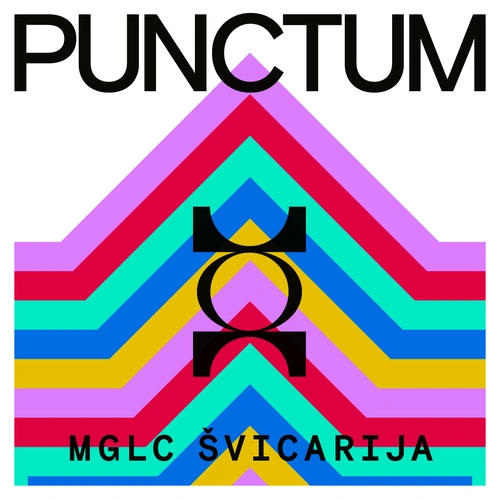
The concept of the exhibition goes back to the role of Švicarija, which throughout history has been a clandestine, autonomous and self-organised hotbed of creativity on the edge of the city park. Turning points in time have changed the lives of the residents and the creative paths of the artists, who have always remained connected to the community. The artists in the exhibition also work on the margins of social and creative developments, paving the way for raw and primal testimony. With the exhibition Punctum (Point), we have invited them into a temporary community connected by impulsive creativity.
For the artists, art is a place of confrontation with life and professional challenge. With their sense of freedom and unencumbered by academic posturing, they firmly assert their status as creative dissidents. This year, the Museum of Too-modern Art would have celebrated its 20th anniversary. With works from the museum's estate, we remember the Too-Modernists as an art movement that refused to belong to an artistic direction or style. Dean Ivandić is a former conceptual artist and bookseller. When he closed the Behemot bookshop in Ljubljana, he began to ritually create portraits from the bookshelves as visual memories of the bookshop's visitors. Dušan Gerlica sculpts instinctively. With the installation of wooden sculptures made of sequoia, he invites us to surrender to the materiality and primordial memory of shaped wood. Saša Bezjak explores her intimacy and the fragility of family relations through spatial installations, paintings and sculptures. Her aesthetic expression excels in her personal testimony and her commitment to art helps her to overcome the trials of life. The Witch Twins (Alen and Robi Predanič), who have recreated their intimate sanctuary as a fairytale and surreal world in which the boundaries between dreams and reality disappear, face the outside world in a similar way.
The artists' unusual histories, interrupted or re-established in the exhibition, show the decisive choices they have made in their lives. Their works constantly oscillate between autobiographical elements and creative autofiction, taking unexpected positions and discovering their own focus of artistic expression.
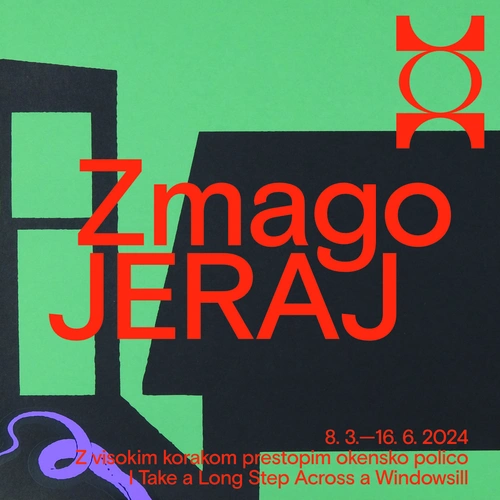
An erudite personality, one of the intriguing aspects of Zmago Jeraj’s (1937–2015) intellectual world was his interest in literature. Within this framework, among others, belongs his enthusiasm for the work of the Polish writer and painter Bruno Schulz (1892–1942). To reflect this interest, the exhibition attempts to symbolically connect both authors through some of its elements. Thus, we have borrowed the exhibition’s title from one of Schulz’s stories, “A Night in July”. A line from the text, “I take a long step across a windowsill”, aptly describes a group of Jeraj’s works that awakened our attention. It is a group of selected paintings, photographs and graphic prints from the early mature phase of Jeraj’s opus at the end of the 1960s and 1970s, in which Jeraj deals with a specific problem: the relationship and transitioning between interior and exterior spaces, between inside and outside, between closed and open. In the images presented in the exhibition, we often see, on the one side, borders, barriers and fences, and on the other side, pathways and openings that “break” the former. The design of the exhibition’s installation, signed by Toni Soprano Meneglejte, is also connected to the exhibition’s concept: the question of spatiality in the works of Zmago Jeraj.
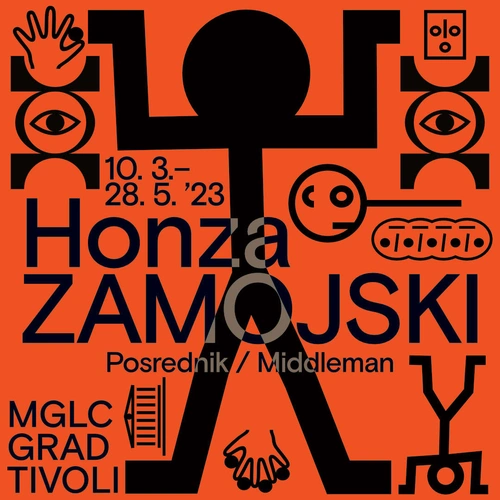
The work of Polish artist Honza Zamojski attracted a lot of attention at the 33rd Biennial of Graphic Arts and received the special Audience Award. This time, he is preparing a site-specific installation and artist's book for the exhibition space at MGLC. In his latest exhibition, the eponymous Middleman plays various roles. He is a viewer who, upon entering the exhibition space, stands in the middle of the symmetrical architecture. He is also an author who mediates between the world of ideas and the material world by creating drawings, sculptures and texts. Middleman is also visualised as a simplified and symbolic puppet that can be moved by various forces.
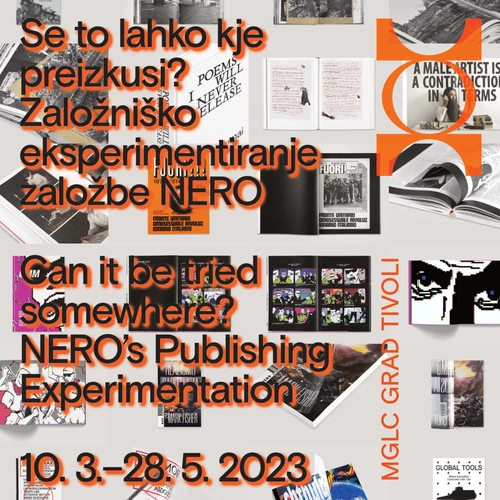
NERO is a quarterly magazine and publishing house specialising in artists' books, editions and catalogues that respond to the spontaneous need to connect to a broader cultural discourse and use art to explore the imaginaries of the world to come and the relevant issues of the present.
Middleman, the latest book by Honza Zamojski, which is an illustrative and poetic attempt to describe the Middleman, his everyday life and the reality that surrounds him, will be published by Nero Editions in May.
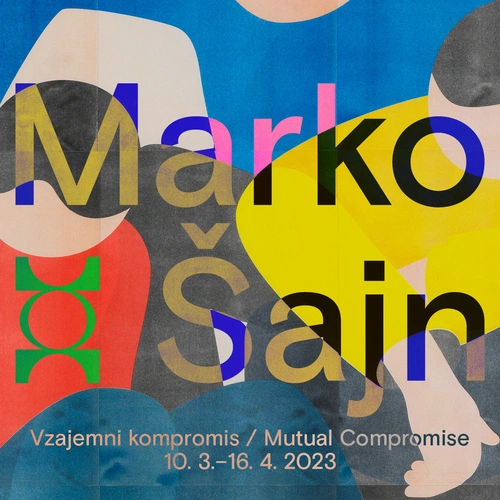
The exhibition Mutual Compromise presents the latest series of prints in silkscreen and riso-printing techniques, as well as a metal object as a special feature of the exhibition. Marko Šajn's prints are characterised by a clear concept and perfect execution, a humorous, funny, fast-paced, witty and playful artistic expression with many references to art history, classical painting, popular printmaking, urban culture, graffiti and street art. He focuses on the motifs of human bodies that form diverse pictorial compositions through movements and different positions.


